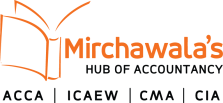Are you preparing for the ACCA Business and Technology (ACCA BT) exam? This blog post will help you with the key ideas, structures, and techniques you need to excel in your exam.
Quick Glance at ACCA BT Paper
The ACCA business and technology paper helps you understand how businesses work, the function of technology, and the role accountants play in the larger organizational structure, all of which are part of ACCA BT, which is more than simply theory. We will discuss each point one by one with helpful advice and show you how to handle typical exam problems.
ACCA Business and Technology: Exam Structure
The ACCA BT exam is a computer-based examination; this implies that a computer screen will be used for both reading and responding to queries.
There are two sections: A & B.
- Section A includes 46 objective test (OT) questions, including 30 two-mark and 16 one-mark questions.
- Section B includes six multi-task questions (MTQ) in Section B, and each one is worth four marks.
ACCA Business and Technology (BT) Exam Duration
The BT exam usually lasts two hours. You have to read, respond to, and go over every question in that time.
Marks and Pass Requirement
The exam is marked out of 100. You need a score of at least 50 to qualify for the exam.
The Question Distribution in the ACCA BT Exam
ACCA can modify question distributions; you will usually come across multiple-choice questions that are worth one or two marks apiece. Possible “scenario-based” questions that ask you to use frameworks or theories in brief vignettes. There are no lengthy essays because each question is meant to keep you focused on application, analysis, and memory.
How to Crack the ACCA Business and Technology: Key Tips
Focus on Practice and Mock Exams
- Regular practice using ACCA’s sample and previous questions is one of the greatest methods to become familiar with the format and question types of the BT exam.
- Give yourself a fixed two-hour window and do the complete mock exam at once to replicate exam conditions.
- Check your findings carefully, making a note of the subjects you frequently overlook, such as governance, organizational structures, or ethics, and then going into greater detail to address them.
Learn Time Management
- Give each mark about 1.2 minutes. Pacing is essential because there are 100 marks altogether.
- If a question stumps you, flag it (computer-based tests let you do that), continue, and if you have time, return later.
- Carefully read each question. Best ACCA teachers and the official transcript emphasize how easily students can lose points for misunderstanding a question or omitting important terms like “except,” “not,” or “all of the following.”
Understand the Structure of Questions
Usually, the simple multiple-choice questions check your recall abilities. Definitions of leadership styles or the foundations of corporate governance are examples of theoretical queries.
Scenario-based questions: A brief description of an organization dealing with particular problems may be shown.
Recognize Your Key Theories
During BT exam practice, these theories are mentioned frequently:
- Leadership (Blake and Mouton grid; authoritarian, democratic, laissez-faire).
- Forming, storming, norming, and performing are Tuckman’s stages; note that a significant staff turnover frequently causes a team to revert to form.
- Motivation theories (though they are more frequently encountered in other ACCA tests, Herzberg’s two-factor theory or Maslow’s hierarchy may be mentioned in passing).
- Unemployment types include seasonal, cyclical, frictional, and structural.
- Models of stakeholders (internal, external, and linked).
Leverage Official ACCA Resources
- Practice materials and study guides: These texts closely match the official syllabus if you study with a learning provider that has been approved by the ACCA.
- Resources on the ACCA website include examiner comments, example questions, and official technical papers. They usually point out typical mistakes or challenging locations where students lose points.
Last Verdicts
There is a popular misperception that qualifying for ACCA business and technology exams is very easy. It is generally assumed that certain questions can seem simpler to answer than others, but this isn’t always the case, especially when it comes to scenario-based questions.
Positively, there will be enough time to thoroughly check the question situations because the ACCA business and technology exam is not time-pressured. This is to ensure that you understand the major details completely and, as a result, choose the response options that best suit the situation. Consider enrolling in the ACCA BT course at Mirchawala to qualify for your exam on the first attempt.
Frequently Asked Questions (FAQs)
Q: How to qualify for the BT exam ACCA?
Ans: To pass the ACCA business and technology exam, you must receive a score of 50 out of 100. This is entirely feasible with a positive attitude, good practice of the questions, and a firm understanding of the ACCA exam pattern and principles.
Q: Is the ACCA BT exam difficult?
Ans: Although the ACCA business and technology exam is generally regarded as challenging, you can qualify for this exam with the right approach, planning, and smart work.
Q: What is the difference between BT and FBT?
Ans: Business Technology, or BT for short, is the first test required to earn the ACCA professional certification. Conversely, if a student begins ACCA via the Foundation Route, they will appear in FBT, which stands for Foundation in Business Technology.





